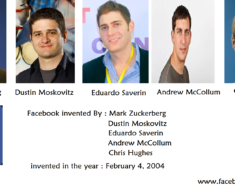In 2014, there were approximately 14.5 million Americans living with cancer. By the year 2024, it has been estimated that that figure will jump to more than 19 million. With so much innovative research being performed in the areas of cancer diagnosis and treatment, however, leading minds like Dr. Clay Siegall are hopeful that the trend will start being reversed before very long. Contrary to what many people believe, the most exciting advances in cancer research have moved away from traditional, hit-or-miss approaches like chemotherapy and radiation. Nowadays, the most promising research that is happening involves whole genome sequencing and targeted cancer therapies.
More than 600,000 people in the U.S. lose their lives to cancer every year; another 1.6 million are newly diagnosed. Nearly 40 percent of men and women will be diagnosed with some form of cancer at some point in their lives. Because cancer touches just about everyone’s lives, it has long been the focus of the most cutting-edge medical and scientific research out there. These days, some of the most exciting advances are occurring at the genetic level, as scientists are increasingly able to identify and event predict the occurrence of cancer by pinpointing tiny errors in patients’ genetic code.
If you think that whole genome sequencing, or WGS, is barely beyond the realm of science fiction at this point, think again. The fact is that it has become so established and respected that it is expected and hoped to become as ubiquitous as things like biopsies and blood tests in the future. In fact, England’s chief medical officer, Prof Dame Sally Davies, recently called on the NHS to offer DNA tests to cancer patients to more easily identify effective treatments. More than 31,000 patients, including many who have been diagnosed with cancer, have already had their genetic code sequenced.
To understand why whole genome sequencing holds such promise in the world of cancer research, it helps to understand what it helps to identify. The human body has more than 20,000 genes. A tiny error in a single gene can wreak huge havoc and precipitate the development of cancer and other deadly diseases. Sometimes, people are born with genes that already contain these errors because they have been passed down by their parents. More commonly, however, a gene that has otherwise been healthy and fine may change and develop errors that can prompt the onset of cancer and other problems.
During whole genome sequencing, or WGS, normal, healthy tissue can be compared to tumors to form a baseline for what is normal and what isn’t. From there, errors within the genes can be identified and point doctors in the direction of effective treatments. This process allows doctors to avoid much of the trial and error that has long been associated with treating many types of cancer. As a result, it makes things much easier on the patient, and it saves untold amounts of time, money and effort. Most importantly of all, it allows doctors to more quickly identify treatments that will actually work.
Whole genome sequencing is likely to become par for the course before very long. However, it’s hardly the only big development in the world of cancer treatment. For example, a team of researchers at England’s University of Lyon have developed a urine test that can accurately predict the recurrence of bladder cancer. It does so by identifying the presence of a faulty protein, TERT, in the urine. This test accurately predicts the recurrence of bladder cancer around 80 percent of the time. The previous standard for detecting this form of cancer, cytology testing, only has an accuracy rate of around 34 percent.
More exciting research is happening over in the Netherlands, where researchers at the Radboud MC teaching hospital in Nijmehen have developed a faster way to diagnose prostate cancer. About one in seven men is diagnosed with this form of cancer every year. It is very treatable when it is caught in its earliest stages, so this new test is very exciting and promising. Before, it would take months to get an accurate diagnosis. Using the new method, which incorporates MRI imaging, accurate diagnoses may be made in as little as two weeks. Without question, this test will save lives.
It’s easy to focus on the researchers who are identifying these exciting treatments, and they do indeed deserve all of the accolades that they receive. However, the work doesn’t end with them. Pharmaceutical companies help to bring many of these new techniques to the public, and those who sit on their boards of directors and the like are typically leaders in the world of cancer research. Seattle Genetics, which is based in Seattle, WA, is a prime example of this phenomenon. Under the direction of founder, CEO and COB Dr. Clay B. Siegall, Seattle Genetics has advanced antibody drug conjugate, or ADC, technology and other promising techniques.
How did Clay Siegall rise to become the head of such an innovative biotech firm? A quick look at his credentials reveals a man who has long been committed to being on the forefront of scientific and medical research. Siegall holds a bachelor of science in zoology from the University of Maryland. He also holds a PhD in genetics from George Washington University. Previously, Dr. Siegall was employed by the National Cancer Institute from 1988 to 1991 and then by Bristol-Myers Squibb Pharmaceutical Research Institute from 1991 to 1997.
Since being founded in 1998, Seattle Genetics has emerged as one of the most innovative biotech firms in the realm of targeted cancer therapies. Without question, Dame Sally’s promotion of whole genome sequencing is music to Siegall’s ears, as this type of testing will help to advance the cause of cancer research in many profound ways. In addition to being founder and CEO of Seattle Genetics, Clay Siegall serves on the boards of directors of Alder Biopharmaceuticals, Ultragenyx Pharmaceutical and Mirna Therapeutics, Inc. He hopes to continue being a power player in the world of cancer research for a long time to come.
Dil Bole Oberoi





